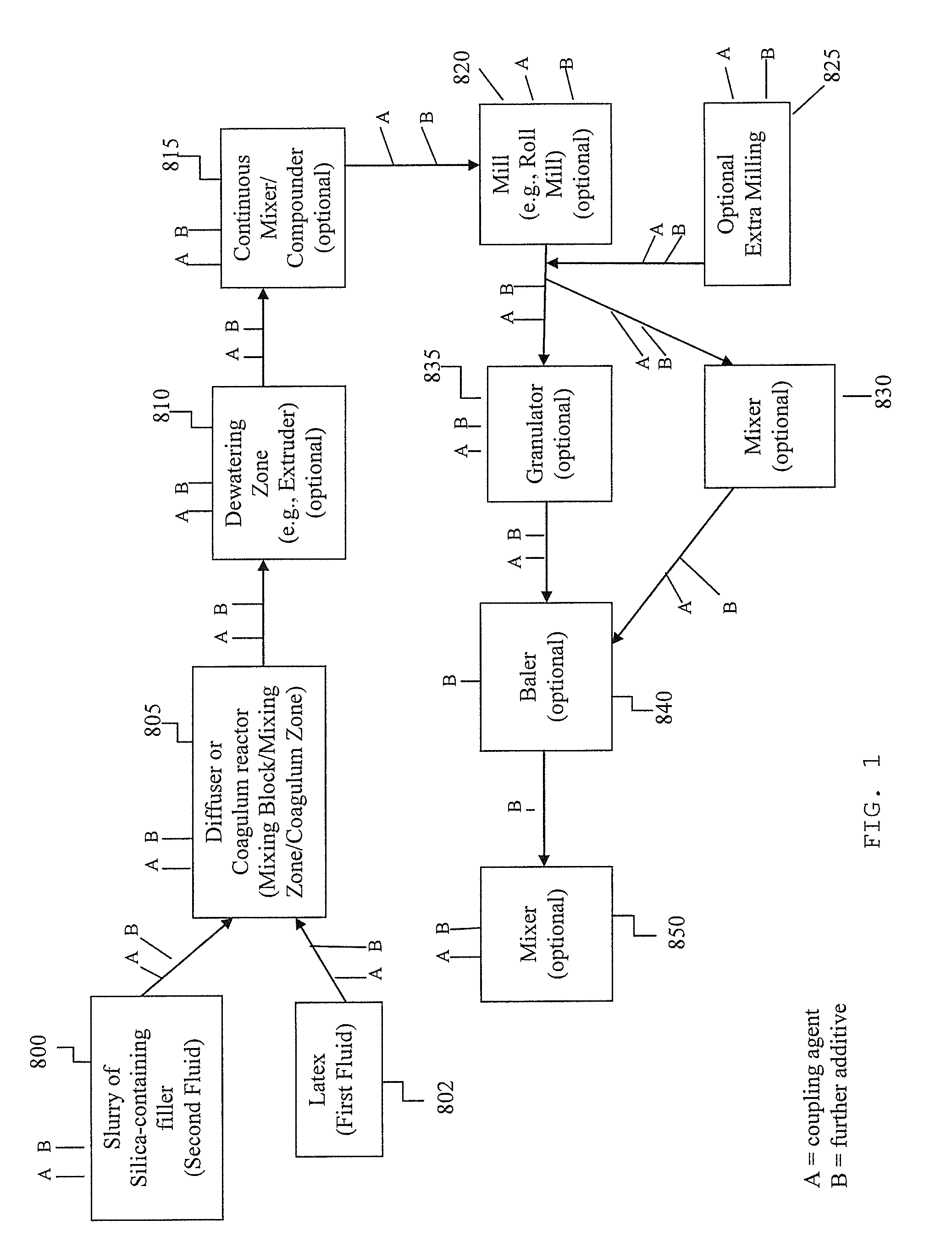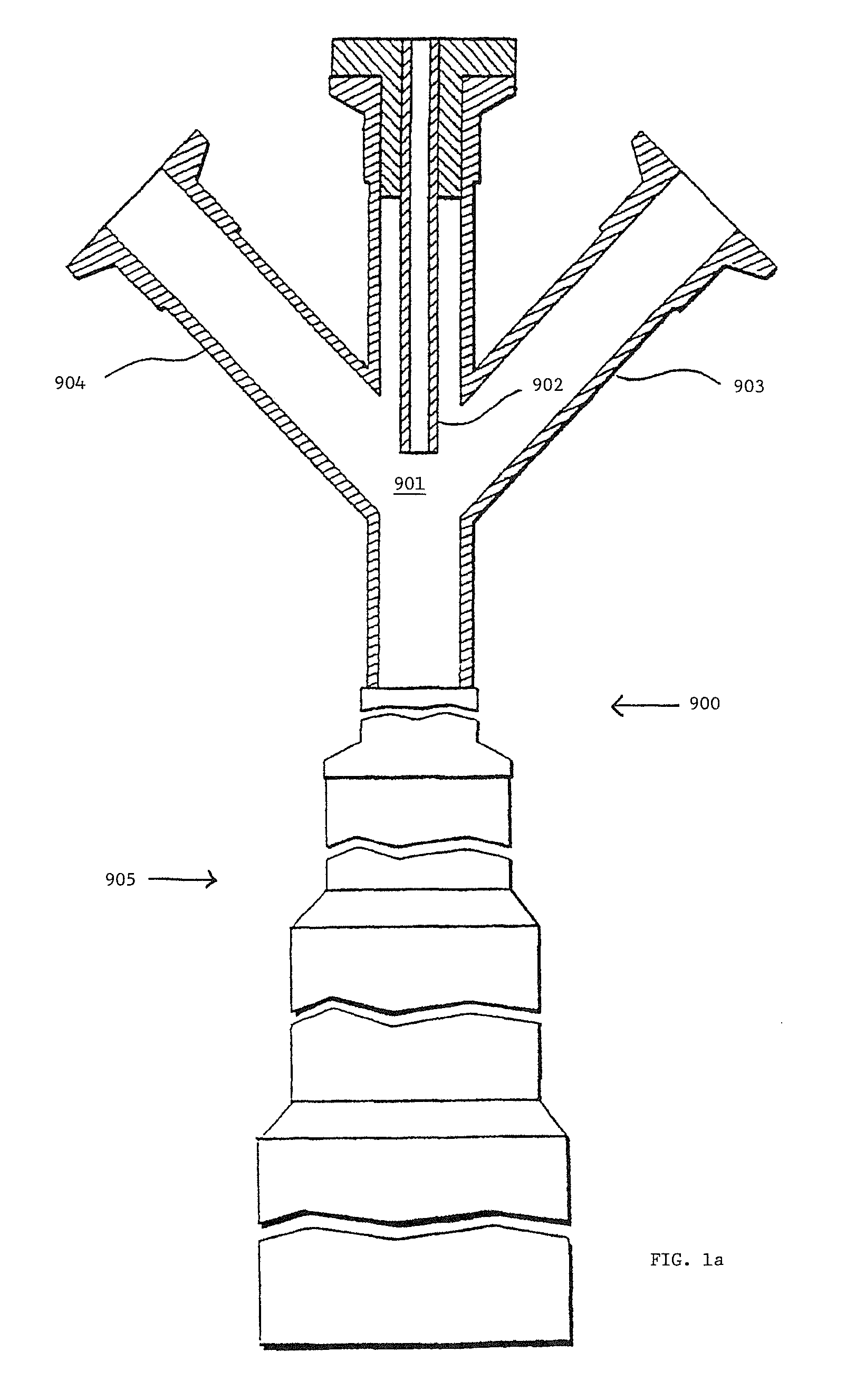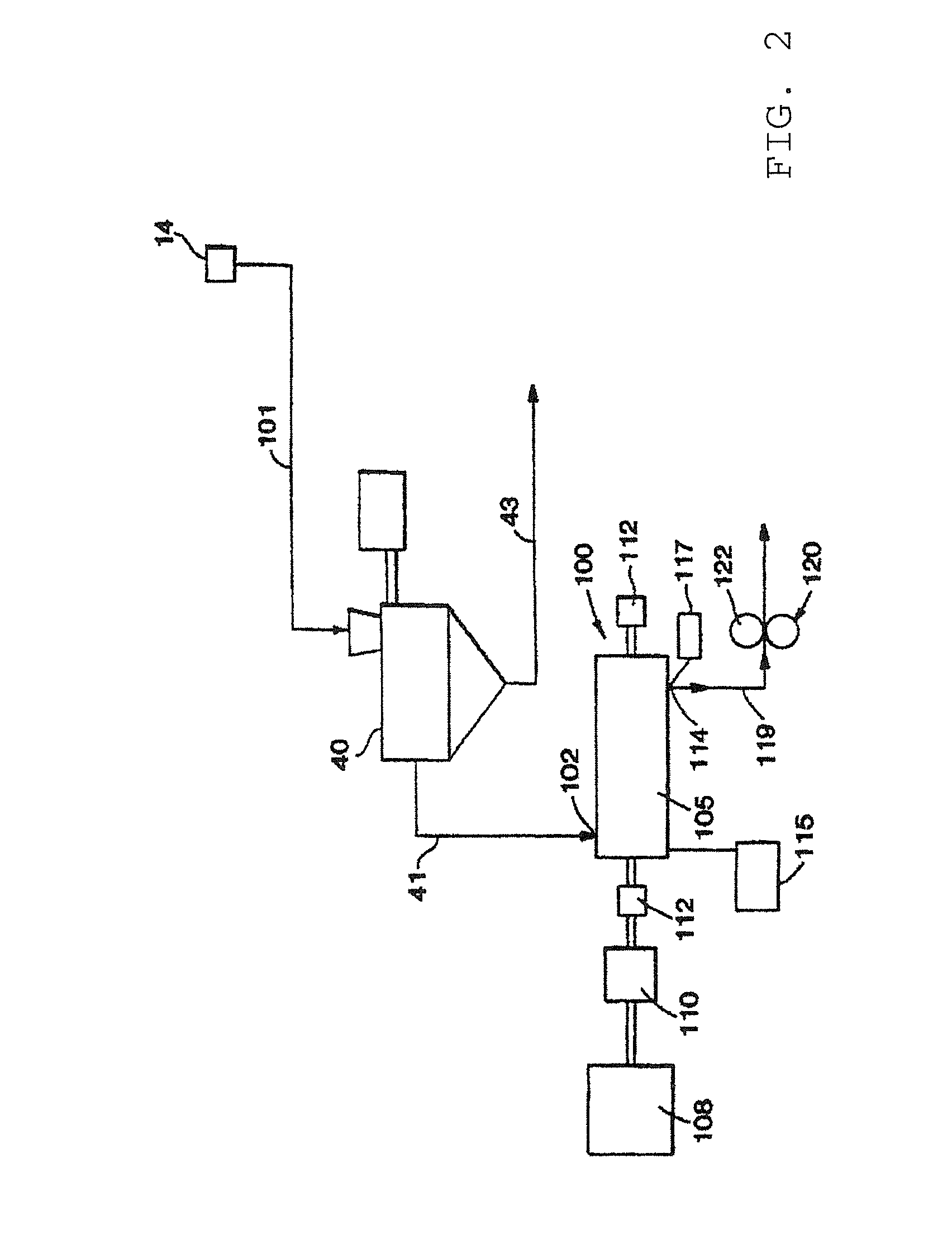Elastomer composite with silica-containing filler and methods to produce same
a technology of filler and elastomer, which is applied in the direction of dissolving, transportation and packaging, mixing, etc., can solve the problems of reducing the molecular weight of rubber, affecting the performance of rubber, and affecting the elastomer into which the carbon black is dispersed, and achieves desirable performance properties
- Summary
- Abstract
- Description
- Claims
- Application Information
AI Technical Summary
Benefits of technology
Problems solved by technology
Method used
Image
Examples
examples 1-14
[0134]In the following theoretical examples (Examples 1-14), coagulated wet masterbatches are produced by impacting a stream of natural rubber latex with a relatively higher velocity stream (75 m / s) of a silica-containing filler slurry (namely, ECOBLACK™ CRX-2125 filler from Cabot Corporation at 12% by weight) in the mixing zone of a coagulum reactor. The coagulated masterbatch crumb, which contains between 70 and 85 wt % water, is then dewatered (DW) to about 10-20 wt % water using a dewatering extruder (French Oil Mill Machinery Company, Piqua, Ohio). In the extruder, the masterbatch crumb is compressed, and water squeezed from the crumb is ejected through a slotted barrel of the extruder. The resulting dewatered coagulum is dropped into a continuous compounder (Farrel Continuous Mixer (FCM), Farrel Corporation) where it is masticated and dried. The moisture content of the resulting masticated masterbatch exiting the FCM is around 1-2 wt %. The masticated masterbatch is further ma...
example 15
[0137]A wet masterbatch was produced by impacting a stream of natural rubber latex with a relatively higher velocity stream (75 m / s) of a silica-containing filler slurry (namely, ECOBLACK™ CRX-2125 filler from Cabot Corporation at 12% by weight). The coagulated masterbatch crumb, which contained about 80 wt % water, was then dewatered (DW) to about 15 wt % water using a dewatering extruder (French Oil Mill Machinery Company, Piqua, Ohio). In the extruder, the masterbatch crumb was compressed, and water squeezed from the crumb was ejected through a slotted barrel of the extruder. The resulting dewatered coagulum was dropped into a continuous compounder (Farrel Continuous Mixer (FCM), Farrel Corporation) for mastication and drying. An antioxidant, 6PPD, was added to the FCM at a rate such that the resulting concentration in the resulting masticated masterbatch was 1.0 phr. The moisture content of the masticated masterbatch exiting the FCM was around 1-2%. The masticated masterbatch wa...
example 16
[0138]A wet masterbatch was produced by impacting a stream of natural rubber latex with a relatively higher velocity stream (75 m / s) of a silica-containing filler slurry (namely, ECOBLACK™ CRX-2125 filler from Cabot Corporation at a concentration of 12 wt %) in the mixing zone of a coagulum reactor. The coagulated masterbatch crumb, which contained about 80 wt % water, was then dewatered (DW) to about 15 wt % water using a dewatering extruder (French Oil Mill Machinery Company, Piqua, Ohio). In the extruder, the masterbatch crumb was compressed, and water squeezed from the crumb was ejected through a slotted barrel of the extruder. The resulting dewatered coagulum was dropped into a continuous compounder for mastication and drying (Farrel Continuous Mixer (FCM), Farrel Corporation). A coupling agent, Si-69, was added to the FCM at a rate such that the concentration in the resulting masticated masterbatch was about 2% of the filler weight. The moisture content of the masticated maste...
PUM
| Property | Measurement | Unit |
|---|---|---|
| specific energy | aaaaa | aaaaa |
| pressure | aaaaa | aaaaa |
| pressure | aaaaa | aaaaa |
Abstract
Description
Claims
Application Information
 Login to View More
Login to View More - R&D
- Intellectual Property
- Life Sciences
- Materials
- Tech Scout
- Unparalleled Data Quality
- Higher Quality Content
- 60% Fewer Hallucinations
Browse by: Latest US Patents, China's latest patents, Technical Efficacy Thesaurus, Application Domain, Technology Topic, Popular Technical Reports.
© 2025 PatSnap. All rights reserved.Legal|Privacy policy|Modern Slavery Act Transparency Statement|Sitemap|About US| Contact US: help@patsnap.com



